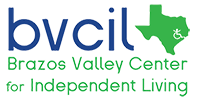by Gia Alexander
Independent Living Facilitator
World Braille Day is acknowledged every year on January 4 to commemorate the birthday of Louis Braille (1809-1852), who, after losing his sight, developed the Braille code that to this day affords equal access to reading and writing by people who have blindness or low vision.
World Braille Week follows each year from January 4-10. Braille is a codified system  of patterns of raised dots arranged in groups of six, called “cells,” that represent individual characters, parts of words, or whole words, depending on the level of contraction, or shorthand, the user chooses. Uncontracted Braille uses a single cell with a specific arrangement of raised dots to represent each letter of the alphabet and punctuation marks. Contracted Braille is similar to the “text-speak” we often use today to communicate on our electronic devices, such as using the letter “u” in place of the word “you.”
of patterns of raised dots arranged in groups of six, called “cells,” that represent individual characters, parts of words, or whole words, depending on the level of contraction, or shorthand, the user chooses. Uncontracted Braille uses a single cell with a specific arrangement of raised dots to represent each letter of the alphabet and punctuation marks. Contracted Braille is similar to the “text-speak” we often use today to communicate on our electronic devices, such as using the letter “u” in place of the word “you.”
Despite the advancements in electronics and other low vision-related technology, Braille is still relevant to the independent living of those who use it. It has become more than the basic codified system of dots and cells in books to include many kinds of raised markings that people who have vision loss use to make their environments more accessible. For instance, at the Brazos Valley Center for Independent Living, visitors can see many examples of Braille in use, such as Braille number labels on the microwave in the teaching kitchen, and also posted instructions in Braille describing how to get out of the building safely in an emergency. Hand-held Braille label makers and portable Braille typewriters enable ready access to this useful system for environment modification. Tactile Braille display devices that connect to computers make on-screen text accessible.
 And all work and no play makes Braille a dull code! Many games and other recreational activities are available in Braille, enabling those who have low or no vision to engage in the same recreational choices as those with good sight. Braille
And all work and no play makes Braille a dull code! Many games and other recreational activities are available in Braille, enabling those who have low or no vision to engage in the same recreational choices as those with good sight. Braille playing cards, Braille Monopoly, and Braille Sudoku are just three selections available to users.
playing cards, Braille Monopoly, and Braille Sudoku are just three selections available to users.
Braille is a tool that people who have blindness or low vision choose to use to improve access to information and to make environments more safe and accessible. So today and for the week to come, we honor Louis Braille and appreciate his contribution to independent living.

